Honeywell 3011-8665 BATTERY User manual
- Category
- Rechargeable batteries
- Type
- User manual

1.0 – INTRODUCTION
1.1 – Product Description
The BAS Series are automotive-grade aerosol sensors that use
the principle of light scattering to detect and report thermal
runaway events in lithium-ion battery packs. They use the light
scattering principle to detect the presence and concentration
of aerosols such as smoke, liquid and other particles that are
early indicators of a thermal runaway event in an enclosed
lithium-ion battery pack.
The BAS Series have a factory-programmed, thermal runaway
warning threshold of 5000 μg/m³.
1.2 – General Requirements
The performance of the sensor meets the requirements
defined in this specification when the sensor is used under
the environmental conditions specified in this document. Any
deviation from the use defined in this document will invalidate
this specification.
2.0 – INSTALLATION
2.1 Sensor may be installed in any orientation.
2.1a Ensure battery pack vent valve is unblocked.
2.2 Install sensor with 10 cm clearance on both sides of
the hollow sensing chamber.
Figure 1. BAS Side Mount
>10 cm
>10 cm
Top Cover
Bottom Cover
Cells/individual battery
modules
Figure 2. BAS Bottom Mount
>10 cm >10 cm
Top Cover
Bottom Cover
Cells/individual battery
modules
Cells/individual battery
modules
Figure 3. BAS Top Mount
>10 cm >10 cm
Top Cover
Bottom Cover
Cells/individual battery
modules
2.3 Mount the sensor using two mounting holes and
two M6 screws.
2.4 10 Nm max. torque for mounting screw.
2.5 Mating connector: TE MPN 175507-2
INSTALLATION INSTRUCTIONS FOR THE
BATTERY SAFETY
AEROSOL SENSOR
3011-8665
Issue 1

BATTERY SAFETY AEROSOL SENSOR
BAS SERIES
Issue 1
3011-8665
BAS Series Installation Instructions | sps.honeywell.com/ast |
2.6 Mounting Dimensions
Figure 4. Mounting Dimensions mm [in] (for reference only)
2X ø6,51 [0.26]
51
[2.01]
37
[1.46]
29,5
[1.61]
66
[2.60]
36
[1.42]
Hollow sensing
chamber
TABLE 2. PINOUT FOR CAN VERSIONS
Pin Number Name
1Request
2CAN_L
3CAN_H
4Wake-Up
5GND
6Vcc
TABLE 1. MECHANICAL SPECIFICATIONS
Parameter Characteristic
Mounting screw M6
Adapter connector model 175507-2
Recommended torque 10 N m
Recomended clearance 10 cm

BATTERY SAFETY AEROSOL SENSOR
BAS SERIES
Issue 1
3011-8665
BAS Series Installation Instructions | sps.honeywell.com/ast |
TABLE 3. GENERAL SPECIFICATIONS1
Characteristic Parameter
Operating temperature range -40°C to 85°C [-40°F to 185°F]
Particulate matter measurement range 200 μg/m3 to 10000 μg/m3
Accuracy ≤±15 % at threshold concentration of 5000 μg/m³
Response time ≤1 s
Current consumption (average):
ECO mode
Continuous working mode
<0.5 mA
<30 mA
ECO Mode wake-up threshold 5000 μg/m3
1 All specifications are at room temperature unless otherwise noted.
TABLE 4. ELECTRICAL SPECIFICATIONS 1
Characteristic Min. Typ. Max. Unit
Supply voltage (Vs) 812 16 Vdc
Wake-up signal:
High level voltage
Low level voltage
Output current
8
—
0.6
12
—
1.2
16
0.5
1.8
Vdc
Vdc
mA
REQUEST Input from from BMS to BAS:
High level voltage
Over voltage capability
8
—
12
—
16
24
Vdc
Vdc
Reverse voltage capability -14 — — Vdc
1 All specifications are at room temperature unless otherwise noted.
TABLE 5. COMMUNICATIONS SETTINGS
Baud Rate ID Period Length
500 kbps 0x667 1 s 8 Bytes
TABLE 6. MESSAGE FORMAT
Byte Name Definition
BYTE0 particulate matter concentration —
BYTE1 particulate matter concentration —
BYTE2 Low-power mode wake-up threshold —
BYTE3 Low-power mode wake-up threshold —
BYTE4
0-2 status
0x00 = normal
0x01 = alarm
0x02 = reserved
3-7 fault
0x00 = normal
0x01 = photoelectric device fault
0x02 = Vs over voltage
0x03 = Vs under voltage
others = reserved
BYTE5 0-3 rolling counter —
BYTE6 4-7 — —
BYTE7 CRC check code —

BATTERY SAFETY AEROSOL SENSOR
BAS SERIES
Issue 1
3011-8665
BAS Series Installation Instructions | sps.honeywell.com/ast |
4.0 – THERMAL RUNAWAY WARNING
Figure 5. State Diagram for Operating Modes
Operation Mode
Power On
Continuous Mode for 3 secs
No CAN communication
1. REQUEST pin level is HIGH (External)
2. Aerosol intensity is higher than threshold (Internal)
3. Error from Sensor Diagnostics (Internal)
1. REQUEST pin level changes from HIGH to LOW (External)
2. REQUEST is at LOW level and aerosol intensity is lower
than threshold (Internal)
ECO mode
Te st cycle: 12.2 secs
No CAN communication
Continuous mode
Te st cycle: 1 sec
CAN communication
Aerosol
intensity
detected is
higher than
threshold
Aerosol
intensity
detected is
lower than
threshold
4.1 Operating Modes
The BAS Series is designed to work in two operating modes:
4.1.1 ECO Mode
The sensor operates in ECO Mode when the request pin
voltage is set to low. The sensor wakes up for 200 ms and
hibernates for the remaining 12000 ms (typical) to reduce
power consumption during each measurement cycle of 12200
ms (default value). In ECO Mode, CAN communication is
disabled. If the sensor detects an aerosol concentration above
the set threshold, a wake-up signal is sent to the BMS (Battery
Management System) to initiate a full battery system check.
4.1.2 Continuous Mode
The sensor operates in Continuous Mode when the request
pin voltage is set to high by the BMS. CAN communication is
enabled in Continuous Mode. In Continuous Mode, the sensor
monitors and outputs the aerosol concentration to the BMS
using CAN communication. The sensor may be switched to
ECO Mode by setting the request pin voltage to low.
4.2 Signal Timing Diagram
The timing diagram outlines the timing of events in the right
order.
4.2.1 Request Signal Set to High
The BAS enters Continuous mode due to Request signal set to
high by the BMS.
Figure 6. ECO Mode
Wake-up
CAN
Request
from BMS
OFFOFF ON
ECOECO Continuous
<
2 s
<15 ms to confirm
Request Pin level
Working
mode
4.2.2 Wake-up Signal Signal Set to High
The BAS sets its Wake-up signal to high when it is in ECO
mode and the detected aerosol concentration is above the
5000 μg/m3 threshold..
Figure 7. Continuous Mode
Wake-up
Working
mode
CAN
Request
from BMS
OFFOFFON
ECOECO Continuous
<15 ms to confirm
Request Pin level
BMS finds
nothing
abnormal
and sets
Request Pin
at low level
Determined by BMS (customer)
1 s to confirm
aerosol intensity

BATTERY SAFETY AEROSOL SENSOR
BAS SERIES
Issue 1
3011-8665
BAS Series Installation Instructions | sps.honeywell.com/ast |
Figure 8.Interface Circuits
Wake-up Request
VIN
GND
S
G
D
GND
GND
WAKEUP
0.1 uF
WAKEUP_O
10 kOhm
10 kOhm
100 kOhm
100 kOhm
10 kOhm
100 kOhm
0.1 uF
To BMS
BAS Series Sensor
51 kOhm
REQUEST IN
51 kOhm
GND
GND
1 kOhm
0.1 uF
100 kOhm
S
C
D
+5 V
BMS_R
From BMS
BAS Series Sensor
TABLE 7. WAKE-UP SIGNAL
Parameter Min. Typ. Max. Unit
High level voltage 812 16 Vdc
Low level voltage — — 0.5 Vdc
Output capability 612 18 mA
TABLE 8. REQUEST SIGNAL
Parameter Min. Typ. Max. Unit
High level voltage 812 16 Vdc
Low level voltage — — 0.5 Vdc
5.0 – HARDWARE INTERFACE
5.1 Recommended Wake-up Pin Interface Circuit at
BMS
The Wake-up signal is a logic signal from the BAS sensor to the
BMS. See table below.
5.2 Recommended Request Pin Interface Circuit at
BMS
The Request signal is a logic signal from the BMS to the BAS
sensor. See table below. The default state is active low.

BATTERY SAFETY AEROSOL SENSOR
BAS SERIES
Issue 1
3011-8665
BAS Series Installation Instructions | sps.honeywell.com/ast |
6.0 – FIRMWARE INTERFACE
6.1 Signal Description
TABLE 9. SIGNAL DESCRIPTION
Category Signal Name Signal Description
Thermal Runaway Warning SmokeSensor_Monitor_Density Aerosol Concentration measured in μg/m3 unit
Thermal Runaway Warning SmokeSensor_Status Aerosol concentration Alarm, triggered when the aerosol con-
centration exceeds threshold value (5000 μg/m3)
BAS Self - Test SmokeSensor_FaultInfo
Diagnostics feature indicates normal and abnormal function-
ality of the sensor, abnormality covers internal failure due to
photoelectric fault, Over voltage and under voltage conditions
of the sensor
BAS Self - Test SmokeSensor_CRC Microcontroller EEPROM CRC fault indicator
6.2 BAS Frame and Signal Information
TABLE 10. PINOUT FOR CAN VERSIONS
Signal Name General Description
Start Bit
Length (bit)
Range
Scaling Factor
Offset
Unit
Usage
SmokeSensor_
Monitor_Density Aerosol concentration 016 0-10000 1 0 μg /m³ Aerosol Concentration
SmokeSensor_
FaultThreshold
Aerosol Concentration
Threshold Value 16 16 0-10000 1 0 – Aerosol Concentration Thresh-
old Value (wakeup threshold)
SmokeSensor_Status Aerosol Sensor Status 32 30-7 1 0 –
0x00: Normal
0x01: Alarm
Rest: Reserved
SmokeSensor_
FaultInfo
The Details Fault Sta-
tus of Aerosol Sensor 35 50-31 1 0 –
0x00: Normal
0x01: photoelectric device
fault
0x02: power supply over
voltage fault
0x03: power supply under
voltage fault
Rest: Reserved
Reserved_Bits0 Reserved Bits, Not
Used Now 40 8 – -- -- –
Not used, Reserved for More
Information Later.
Now Initialed as 0
SmokeSensor_
Counter Rolling Counter 48 40-15 1 0 – 0 -15: Means the different
CAN Frame
Reserved_Bits1 Reserved Bits, Not
Used Now 52 4 – – – –
Not used, Reserved for More
Information Later.
Now Initialed as 0
SmokeSensor_CRC The CRC Value For
Byte0 to Byte6 56 80-255 1 0 – The CRC Value

BATTERY SAFETY AEROSOL SENSOR
BAS SERIES
Issue 1
3011-8665
BAS Series Installation Instructions | sps.honeywell.com/ast |
6.3 DBC Parse
Frame ID: 0x3C4
Frame Period: 1s
Function: Report real-time particulate matter
concentration and fault information in Continuous mode.
6.4 Layout Diagram of BAS Frame Message Structure

3011-8665-1-EN | 1 | 11/22
© 2022 Honeywell International Inc. All rights reserved.
For more information
Honeywell Sensing and Safety
Technologies services its customers
through a worldwide network of sales
offices and distributors. For application
assistance, current specifications, pricing
or the nearest Authorized Distributor,
visit our website or call:
USA/Canada +1 302 613 4491
Latin America +1 305 805 8188
Europe +44 1344 238258
Japan +81 (0) 3-6730-7152
Singapore +65 6355 2828
Greater China +86 4006396841
Honeywell
Sensing and Safety Technologies
830 East Arapaho Road
Richardson, TX 75081
sps.honeywell.com/ast
WARRANTY/REMEDY
Honeywell warrants goods of its manufacture
as being free of defective materials and
faulty workmanship during the applicable
warranty period. Honeywell’s standard product
warranty applies unless agreed to otherwise by
Honeywell in writing; please refer to your order
acknowledgment or consult your local sales
office for specific warranty details. If warranted
goods are returned to Honeywell during the
period of coverage, Honeywell will repair or
replace, at its option, without charge those
items that Honeywell, in its sole discretion,
finds defective. The foregoing is buyer’s sole
remedy and is in lieu of all other warranties,
expressed or implied, including those of
merchantability and fitness for a particular
purpose. In no event shall Honeywell be
liable for consequential, special, or indirect
damages.
While Honeywell may provide application
assistance personally, through our literature
and the Honeywell web site, it is buyer’s sole
responsibility to determine the suitability of
the product in the application.
Specifications may change without notice.
The information we supply is believed to
be accurate and reliable as of this writing.
However, Honeywell assumes no responsibility
for its use.
mWARNING
PERSONAL INJURY
DO NOT USE these products as safety or
emergency stop devices or in any other
application where failure of the product
could result in personal injury.
Failure to comply with these
instructions could result in death or
serious injury.
-
 1
1
-
 2
2
-
 3
3
-
 4
4
-
 5
5
-
 6
6
-
 7
7
-
 8
8
Honeywell 3011-8665 BATTERY User manual
- Category
- Rechargeable batteries
- Type
- User manual
Ask a question and I''ll find the answer in the document
Finding information in a document is now easier with AI
Related papers
-
Honeywell 32349406 User manual
-
Honeywell V19 User manual
-
Honeywell 50046793 Installation guide
-
Honeywell 50069443 User manual
-
Honeywell 50069443 User manual
-
Honeywell 50069443 User manual
-
Honeywell 32307666 Installation guide
-
Honeywell 50069443 User manual
-
Honeywell 32307666 User manual
-
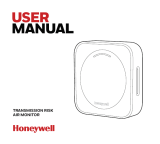 BW HTRAM-V2-W User manual
BW HTRAM-V2-W User manual
Other documents
-
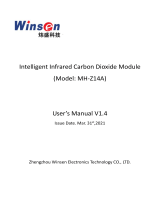 WINSON MH-Z14A Intelligent Infrared Carbon Dioxide Module User manual
WINSON MH-Z14A Intelligent Infrared Carbon Dioxide Module User manual
-
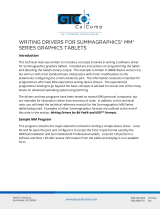 GTCO Cal Comp MM Series User guide
GTCO Cal Comp MM Series User guide
-
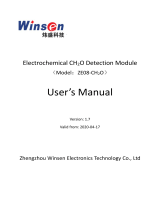 Winsen ZE08-CH2O Electrochemical CH2O Detection Module User manual
Winsen ZE08-CH2O Electrochemical CH2O Detection Module User manual
-
Bacharach MVR-300 User manual
-
SBC PCD7.L60x-1 Room controller from FW SV2.13 Owner's manual
-
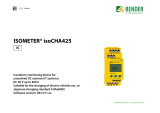 Bender ISOMETER isoCHA425 User manual
Bender ISOMETER isoCHA425 User manual
-
Aerco E8 User manual
-
Bradford White BCFH1000 User manual
-
Samlexpower EVO-1224F Owner's manual
-
Samlexpower EVO-3012 Owner's manual












